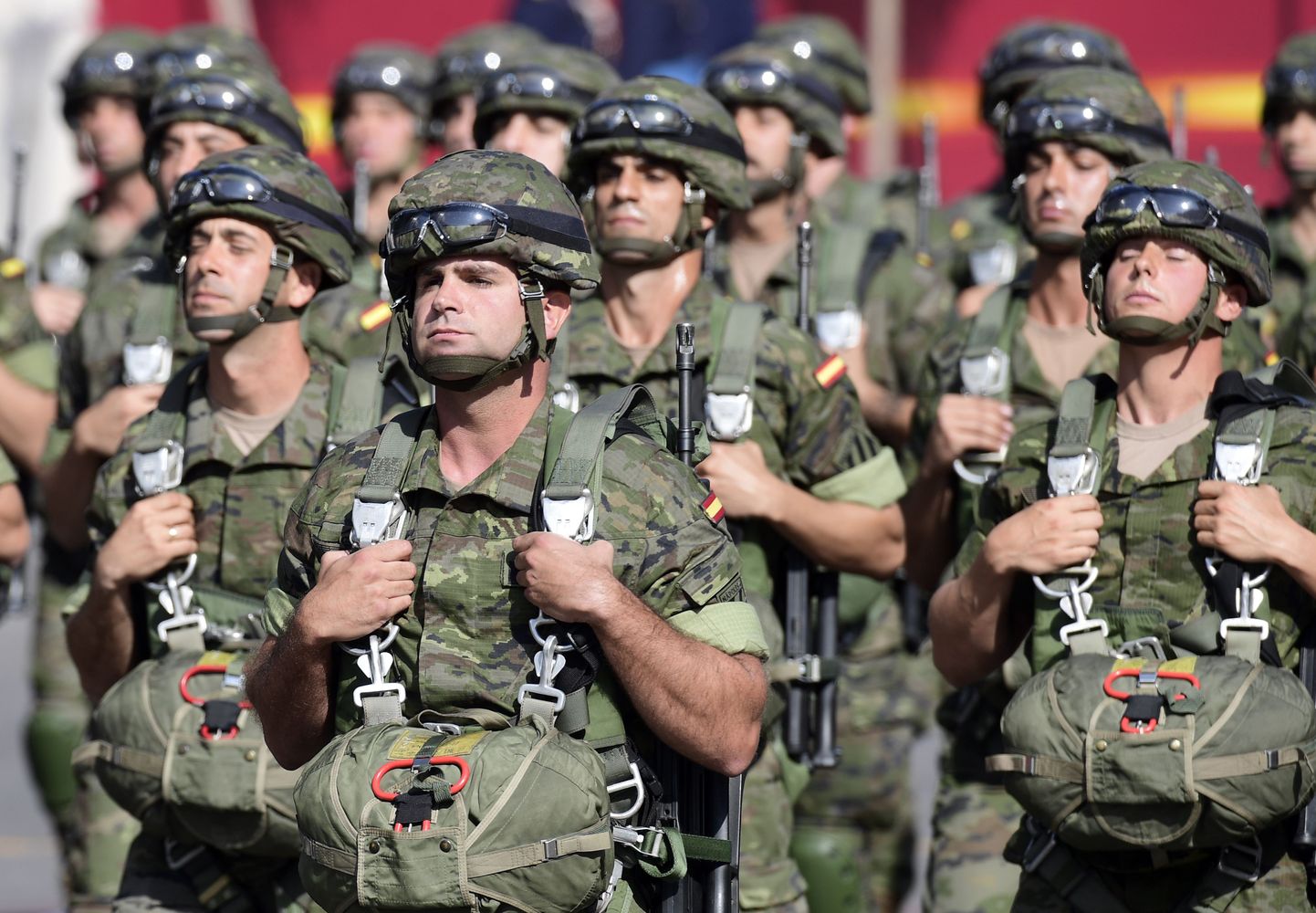
Spain is a country with extensive experience of military operations abroad, beginning from the UN Mission in Angola in 1989. Despite the past experience, taking part in NATO’s Enhanced Forward Presence mission in Latvia has been a challenge.

Spain is a country with extensive experience of military operations abroad, beginning from the UN Mission in Angola in 1989. Despite the past experience, taking part in NATO’s Enhanced Forward Presence mission in Latvia has been a challenge.
Mainly due to two factors: the climate conditions that the soldiers will have to face in Latvia and the fact that this is first time the deployment of Spanish troops involved transporting heavy equipment –including the battle tank Leopard 2E, which boasts some of world’s best cutting-edge technology.
Leopard 2E possesses a thicker armor in areas more likely to receive enemy fire (the tower and the front of the helmet) than the German Leopard 2A6, and it uses a Spanish-designed command and control system similar to the one that can be found in the German Leopard 2.
Captain Carlos Cespedosa explained that Leopard 2E is the element that has the biggest firepower capacity in the whole battlegroup, and has much more maneuverability than the rest of the tanks. It entered service in 2005, and at the time was the world’s most modern platform, although currently some of its elements would merit an update, particularly its optics, electronics, and protection.
Adapting to the climate in Latvia will indeed be a challenge. For that, the Spanish soldiers followed a special training program in a military base in Zaragoza where the extreme winter conditions of the Baltic weather were simulated.
As Captain Cespedosa underlines, the security threats of 2017 are very different from those in 2005: «In the area of hybrid or non-conventional warfare systems the Leopard 2E would require more passive systems than if you are developing in the high-intensity warfare arena.»
Adapting to the climate in Latvia will indeed be a challenge. For that, the Spanish soldiers followed a special training program in a military base in Zaragoza where the extreme winter conditions of the Baltic weather were simulated. Although the temperatures were certainly not as cold, the thermal sensation was close. The contingent also receives special uniforms for the colder side of the year.
In addition, Spanish soldiers took special driving lessons to handle the oftentimes difficult road conditions during winter. All the drivers had to complete a demanding course, to be able to drive vehicles of such size and weight.
The Spanish contingent, much like the rest of the other contingents, passed all the required tests and now all NATO battlegroups are fully operational.
The deployment left from Spain last June. Vigo, in northwestern Spain, was the city chosen for the departure. It took three days to ship all the materiel there from other parts of Spain, and two days to load the civilian ship used for the purpose.
Among the equipment were the Pizarro Infantry Combat Vehicles, the M-113 Heavy Duty Mortars and Spike car missiles, in addition to a number of containers carrying anything from computers to food rations for practice in the training camp. The journey lasted five days.
The arrival to Riga was uncomplicated thanks to the arrangements made by the Latvian authorities, who warned the local population about the arrival to avoid alarming those in the area. Once arrived in the Adaži military base, the logistics was supervised by a Latvian MOVCON Center (Movement Control). The Spanish contingent had flown in a commercial flight three days earlier.
The other major challenge, as indicated above, was that this overseas operation is the first in which Spain has deployed heavy equipment, which signals a powerful commitment with NATO, the Baltic states and global security.
Canadian Lieutenant-Colonel Wade Rutland is an experienced soldier with 23 years of service. He has served in multiple missions (in Bosnia, Afghanistan, Iraq, etc.) explained what «battle rhythm» is, a military term for the meetings that are held each week among different groups. «There are probably about fifty meetings happening each week at different levels.»
Needless to say, everyone speaks English. But to avoid misunderstandings and minimize ambiguity, NATO has the «AAP6», its own book of military terms. «When you say «block», every NATO nation has agreed on what that term means; the same when you say «support by fire»,» Rutland noted. Indeed, as I was attending a military practice exercise I realized to what extent conversations here are significantly shorter than those of civilians.
Before their deployment in Adaži, country contingents involved in the mission got together in Kingston, Canada. As Lieutenant-Colonel Rutland recalls; «We all went together in the last week of March, in what we called the leader development program.» All contingents had a series of briefings from NATO and Latvian experts.
«I have been part of a multinational brigade in Bosnia, I have been in ISAF in Afghanistan; those were groups of nations kind of working apart. This is the first time it has been done with so many involved,» Rutland describes.
The group spent a full day writing down on a whiteboard all the elements that would be essential to ensure proper communication and coordination, such as the different cultural norms, language and doctrines within the group, and then came up with joint solutions. «Today, if you were out in the field you would see an Italian company who was leading a Canadian company in the defensive,» he adds.